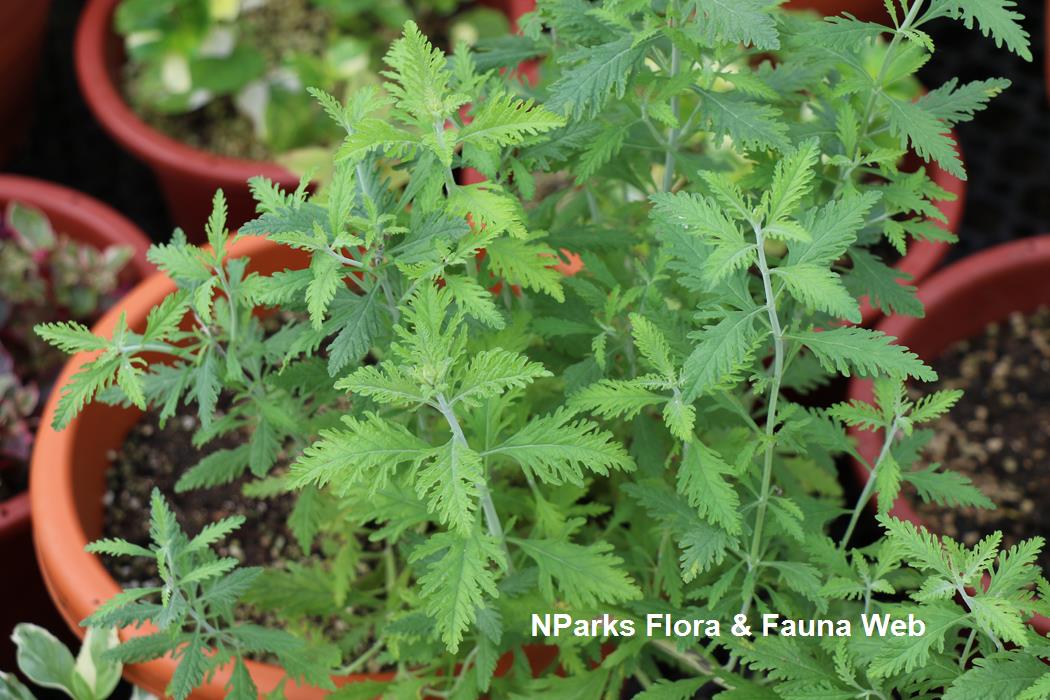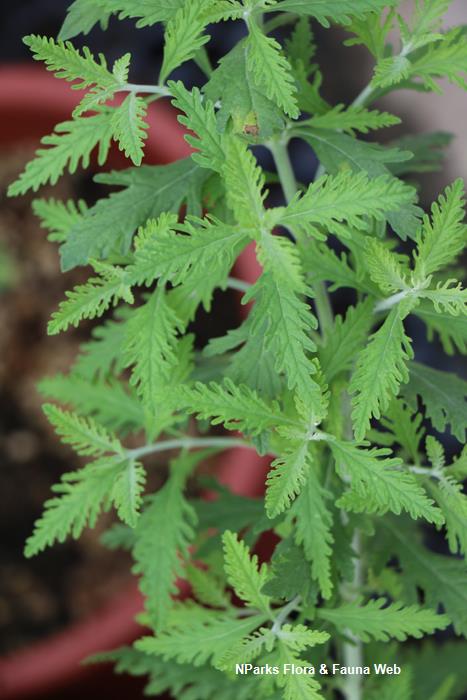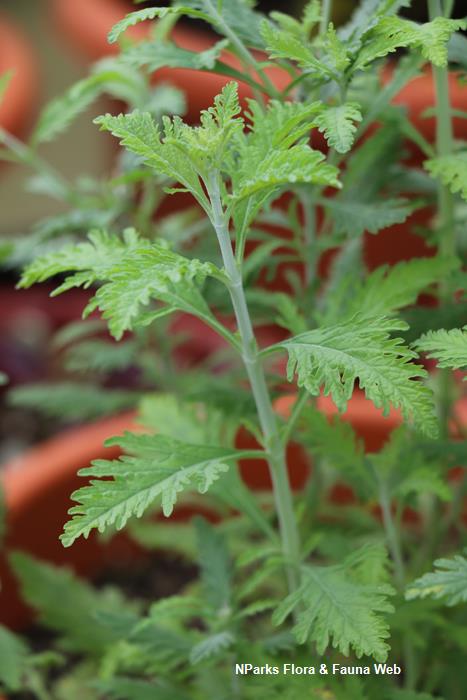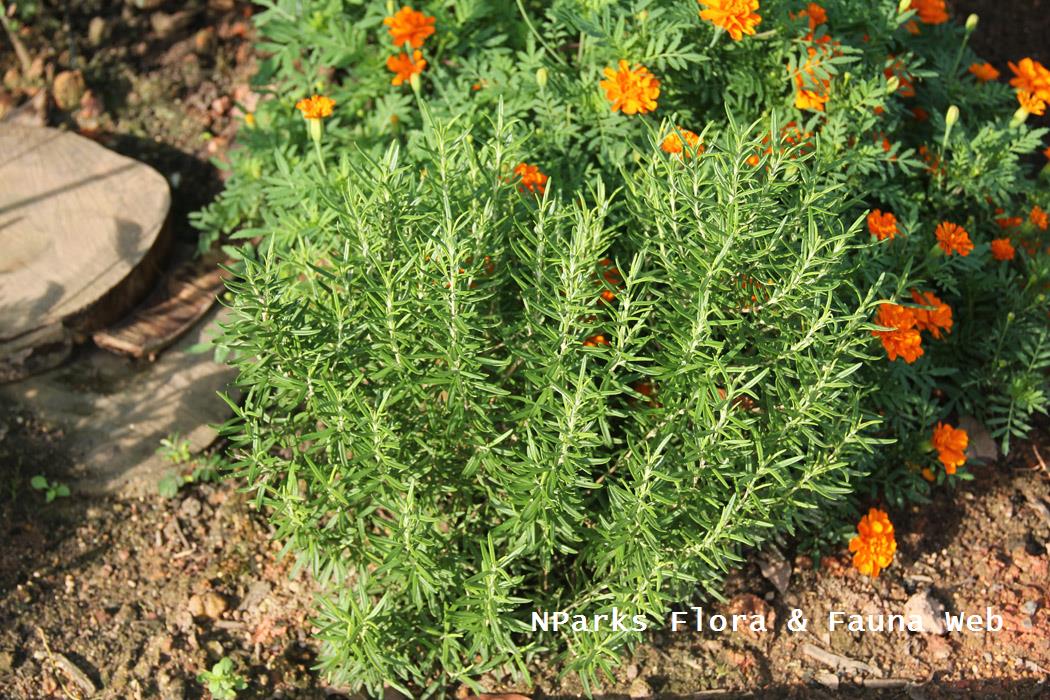
Back
Salvia yangii B.T.Drew
| Family Name: | Lamiaceae (Labiatae) |
| Synonyms: | Perovskia atriplicifolia Benth. |
| Common Name: | Russian Sage |
Russian Sage produces an abundance of lavendar-like flowers and silvery, sofly hairy leaves that smell like Sage when crushed. However, it is not native to Russia and is not a true Sage.
Name
Classifications and Characteristics
| Plant Division | Angiosperms (Flowering Seed Plants) (Dicotyledon) |
|---|---|
| Plant Growth Form | Herbaceous Plant |
| Lifespan (in Singapore) | Perennial |
| Mode of Nutrition | Autotrophic |
| Plant Shape | Shrubby |
| Maximum Height | 0.6 m to 1.2 m |
| Maximum Plant Spread / Crown Width | 0.9 m to 1.8 m |
Biogeography
| Native Distribution | Afghanistan, Pakistan, Tibet, West Himalaya, Xinjiang |
|---|---|
| Native Habitat | Terrestrial |
| Preferred Climate Zone | Temperate |
| Local Conservation Status | Non-native (Horticultural / Cultivated Only) |
Description and Ethnobotany
| Growth Form | Herbaceous plant or subshrub up to 1.2 m tall. |
|---|---|
| Foliage | Silvery-green, softly hairy leaves are elliptic with a toothed leaf margin (2.5 to 5 cm long). Crushed leaves smell like Sage, but should not be eaten. |
| Stems | The silvery green, softly hairy stems are four-sided. |
| Flowers | It produces large, dense clumps of purple, lavender-like flowers. |
| Cultivation | Russian Sage grows best under full sun in well-drained loamy soil. It doesn't require fertilisation, but prefers fresh compost added on a yearly basis. |
Landscaping Features
| Desirable Plant Features | Fragrant (Flowers, Foliage), Ornamental Flowers, Ornamental Foliage |
|---|---|
| Landscape Uses | Container Planting, Flowerbed / Border, Parks & Gardens |
Fauna, Pollination and Dispersal
| Fauna Pollination Dispersal Associated Fauna | Bee-Attracting, Butterfly-Attracting (, Flower Nectar) |
|---|
Plant Care and Propagation
| Light Preference | Full Sun |
|---|---|
| Water Preference | Moderate Water |
| Plant Growth Rate | Moderate |
| Rootzone Tolerance | Drought Tolerant, Saline Soils / Salt Spray, Alkaline high pH Soils, Easy to Grow, Well-Drained Soils |
| Planting Distance | 0.6 m to 0.9 m |
Foliar
| Foliage Retention | Evergreen |
|---|---|
| Mature Foliage Colour(s) | Silver / Grey |
| Mature Foliage Texture(s) | Velvety / Furry / Tomentose |
| Prominent Young Flush Colour(s) | Silver / Grey |
| Young Flush Texture(s) | Velvety / Furry / Tomentose |
| Foliar Type | Simple / Unifoliate |
| Foliar Arrangement Along Stem | Opposite |
| Foliar Attachment to Stem | Sessile |
| Foliar Shape(s) | Non-Palm Foliage (Elliptical) |
| Foliar Venation | Pinnate / Net |
| Foliar Margin | Dentate |
| Foliar Apex - Tip | Acute |
| Foliar Base | Acute |
| Typical Foliar Size | 2.5 cm to 5 cm |
Floral (Angiosperm)
| Flower Colour(s) | Purple |
|---|---|
| Flower Texture(s) | Hairy / Hirsute |
| Flower Grouping | Cluster / Inflorescence |
| Flower Location | Terminal |
| Flower Symmetry | Bilateral |
| Individual Flower Shape | Labiate / Lipped, Tubular |
| Inflorescence Type | Panicle |
Fruit, Seed and Spore
| Mature Fruit Colour(s) | Brown |
|---|
Image Repository
Others
| Master ID | 34372 |
|---|---|
| Species ID | 8785 |
| Flora Disclaimer | The information in this website has been compiled from reliable sources, such as reference works on medicinal plants. It is not a substitute for medical advice or treatment and NParks does not purport to provide any medical advice. Readers should always consult his/her physician before using or consuming a plant for medicinal purposes. |





